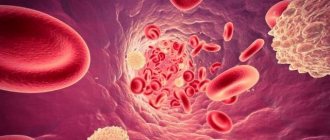Sepsis is a potentially life-threatening condition caused by the body's response to infection. The body typically releases chemicals into the blood to fight infection. Sepsis occurs when the body's response to these chemicals is disrupted, causing changes that can impair the function of many organs.
If sepsis progresses to septic shock, blood pressure drops sharply. This can lead to death.
Sepsis is caused by infections and can happen to anyone. Sepsis is most common and most dangerous for:
- Old people
- Pregnant women
- Children under 1 year old
- People with chronic diseases such as diabetes, kidney disease, lung disease, or cancer
- People with weakened immune systems
In the early stages, sepsis is treated with antibiotics and lots of IV fluids to increase the chances of survival.
- What are the signs and symptoms of sepsis?
- What is septic shock?
- What complications can there be from sepsis?
- How is sepsis diagnosed?
1.What is sepsis?
Sepsis
is a serious disease caused by a suppressed immune response to infection. The more commonly known common name for sepsis is blood poisoning. To fight infection, the body produces chemicals that can cause severe inflammation throughout the body. This inflammation can in turn lead to organ damage.
Blood clotting in sepsis reduces blood flow to the limbs and internal organs, depriving them of nutrients and oxygen. In particularly severe cases, the infection leads to a life-threatening drop in blood pressure. This condition is called septic shock
, and it is really very serious. Septic shock can quickly lead to multiple organ failure—the lungs, kidneys, and liver—causing death.
A must read! Help with treatment and hospitalization!
Complications of sepsis
As sepsis progresses, the blood supply to vital organs such as the brain, heart and kidneys is disrupted. Sepsis can cause blood clots to form in your organs, arms, legs, fingers, and toes, leading to varying degrees of organ failure and tissue death (gangrene).
Most people recover from mild sepsis, but septic shock has a mortality rate of about 40 percent. Additionally, an episode of severe sepsis may put you at greater risk for future infections.
2.Causes and risk factors
Bacterial infections are the most common cause of sepsis. But sepsis can also develop due to other infections. An infection can start anywhere—where bacteria or other infectious agents can enter the body. Blood poisoning can be the result of a seemingly harmless scratch or a serious medical problem - appendicitis, pneumonia, meningitis or a urinary tract infection. Sepsis can occur with bone infections - osteomyelitis.
Theoretically, anyone can develop sepsis. But some people are at increased risk of developing sepsis
. Among them:
- People whose immune systems are not functioning well due to diseases such as HIV/AIDS or cancer. This group also includes patients treated with narcotic drugs that suppress the immune system (for example, to prevent organ transplant rejection).
- Babies.
- Elderly people, especially if they have health problems.
- Patients hospitalized in the hospital, including those undergoing invasive medical procedures. According to statistics, common areas of primary infection in sepsis are surgical incisions, urinary catheters and bedsores.
- Patients with diabetes.
Visit our Therapy page
Causes of sepsis
Doctors in oncology clinics are tasked with monitoring the condition of patients, the ability to recognize primary symptoms in cancer patients and timely implementation of effective therapy.
The Medscan clinic provides all the necessary measures for the treatment of cancer patients with the development of sepsis. The laboratory is equipped with everything necessary to conduct a blood test for bacterial endotoxin, study the activity of endotoxin in the blood and differential diagnostics for the activity of Gr-flora. The level of procalcitonin is also determined in laboratory conditions. Comprehensive diagnostics makes it possible to identify patients who are at high risk by identifying sepsis in the initial stages of progression.
Sepsis in malignant tumors develops against the background of the following predisposing factors:
- Nosocomial infection
. Cancer patients stay in clinics for a long time. Even with strict adherence to the established rules of antiseptics and asepsis, absolute sterility is impossible to achieve. Pathogenic microorganisms circulate in medical institutions, which are especially dangerous, because due to constant contact with antibiotics, they develop resistance to them. - Drug therapy
. Cancer drugs have a negative effect on all cells that multiply rapidly, regardless of their malignancy. Because of this, complications develop, among which the most common is a decrease in the body’s protective functions.
The cause of sepsis is the weakened body of patients. If you have cancer, you may have problems eating. As a result, immunity decreases. Deterioration of anti-infective protection occurs after intraoperative tissue trauma, after chemotherapy and radiation therapy against the background of cancer.
Surgeries are often performed for cancer, which significantly worsens the situation if there is a predisposition to sepsis. The problem can begin even after a regular injection, not to mention abdominal surgical interventions on the esophagus, lung, intestines, and stomach. In 50% of cases after surgical interventions in cancer patients, a pronounced disturbance in nutritional status is observed.
3.Symptoms of sepsis
Because sepsis can start in different parts of the body, the symptoms of sepsis can vary. Rapid breathing, changes in mental state (confusion, for example) may be the first signs of sepsis
. Other common symptoms of sepsis are:
- Fever, high temperature, chills or vice versa, very low body temperature;
- Rare urination;
- Rapid pulse;
- Fast breathing;
- Nausea and vomiting;
- Diarrhea.
About our clinic Chistye Prudy metro station Medintercom page!
Conditions for the development of sepsis
Almost all known pathogenic microorganisms can provoke the development of sepsis: bacteria, parasitic viruses, fungi. They can enter the human body from the outside, but pathology can also be provoked by the natural, opportunistic flora of the body in cases of immunodeficiency.
For infection to cause sepsis, special conditions must arise. Only in this case can a pathological response of the immune system occur and a generalization of the process will occur, which will affect all organs and life support systems.
The likelihood of developing sepsis due to infection of the body increases in pregnant women and children under one year old, as well as in people:
- Over 75.
- Suffering from chronic diseases.
- With alcohol and drug addiction.
The risks of developing a dangerous pathological condition also increase:
- After highly traumatic operations.
- After invasive manipulations.
- After chemotherapy.
- For injuries and burns.
- With long-term use of glucocorticosteroids and injection drugs
The risk of developing sepsis increases with AIDS and cancer, as well as in the case of long-term treatment in a hospital setting. The development of a life-threatening pathological condition is also facilitated by:
- Vascular catheterization for a long time.
- Artificial ventilation.
- Immunosuppressive therapy.
4. Treatment of the disease
The most important thing in treating sepsis is rapid diagnosis.
If there is reason to suspect blood poisoning,
your doctor may do tests and tests to look for:
- Bacteria in the analysis of blood or other body fluids;
- Source of infection using X-ray, CT scan or ultrasound;
- High or low white blood cell count;
- Low platelet count;
- Low blood pressure;
- Too much acid in the blood (acidosis);
- Changes in kidney or liver function.
intensive care is usually required
, where doctors try to stop the infection, support the functioning of vital organs and regulate blood pressure.
The following are commonly used to treat sepsis:
- Broad-spectrum antibiotics that can kill many types of bacteria;
- Therapy to maintain blood pressure, including the introduction of fluids into the body;
- Oxygen therapy to maintain normal blood oxygen levels.
After the infectious agent can be identified in case of blood poisoning, doctors can begin treating sepsis with the help of special targeted drugs. Depending on the severity of the patient's condition and the consequences of sepsis, artificial ventilation or renal dialysis may be necessary.
Sometimes surgery is necessary to treat sepsis and treat the infected area.
Sepsis, and even more so septic shock, are very dangerous conditions. With septic shock, patient survival is on average 40%, with sepsis - about 80%. People who survive sepsis may develop permanent organ damage. Therefore, at the slightest suspicion of sepsis and blood poisoning, it is very important to receive qualified medical care as quickly as possible.
Disappointing statistics
Natalya Kozhina, AiF.ru: Roman Sergeevich, what is sepsis?
Roman Kozlov: This is a hypersensitive reaction of the body, its immune system, to various microorganisms and their toxins that have penetrated the blood. This reaction is partly comparable to an allergic one. Only with allergies there is a release of histamine, and with sepsis a large number of cytokines, special protein substances that regulate immune reactions, enter the blood. These substances protect the body from infection, while activating the inflammatory process.
Article on the topic
Roman Kozlov: “Sepsis is one of the hottest problems in medicine of the 21st century”
Once in the blood, microorganisms begin to multiply intensively and penetrate into the lungs, heart, kidneys and other organs, which leads to the development of a systemic inflammatory response. It is incredibly difficult to fight the simultaneous attack of infection on all vital organs.
— Who is at risk?
— Patients with weakened immune systems are at risk, for example, patients after complex operations, people suffering from severe chronic diseases (oncology, diabetes, etc.). Risk factors also include wounds, open fractures, burns, chronic foci of infection in the body (for example, caries), purulent-inflammatory processes (carbuncle, purulent lesions of the paranasal sinuses, peritoneum, joints, etc.). Some invasive diagnostic and therapeutic procedures (radiography with the introduction of contrast agents into blood vessels, artificial ventilation of the lungs, installation of catheters) are also associated with a certain risk.
But even the most ordinary incidents can lead to sepsis: a cat scratch, abrasion or injection. It all depends on the specifics of the immune system: for some, everything goes well even with an extensive purulent process, while for others, sepsis begins to develop after brushing their teeth. A healthy person has a fairly high protective reaction, but it is important to remember that our immunity is a variable value, its activity depends on many factors, such as age, lifestyle, environmental situation, nutrition, etc. In children and the elderly, sepsis develops and progresses faster heavier than in middle-aged people.
Photo: www.globallookpress.com
— How many Russians suffer from sepsis?
— Absolutely accurate statistics on the prevalence of sepsis in Russia do not yet exist, and there are reasons for this. Identification of microorganisms that provoke the development of sepsis is difficult, since the methodological recommendations in force in Russia are outdated: diagnosis is carried out on the basis of order of the USSR Ministry of Health No. 535 of April 22, 1985. Septic conditions are often recorded under the code of the underlying disease (trauma, obstetric pathology, etc.).
Article on the topic
Infection roulette. How to protect yourself from hospital-acquired diseases
— What is the percentage of deaths?
— Mortality in sepsis remains high: from 30 to 50%. According to WHO, every minute in different countries 14 people die from sepsis, the total mortality rate annually reaches 4.5–6 million people - this is several times more than from HIV/AIDS and tuberculosis.
Sepsis is characterized by a rapid, sometimes lightning-fast course. Moreover, every hour of delay in drug administration increases the likelihood of death by 8%. It is extremely important to quickly diagnose sepsis and prescribe adequate antimicrobial therapy. However, it still takes our doctors more than three days to identify the causative agent of the microbial process and select effective antimicrobial drugs. This is due to the fact that in Russia outdated manual techniques are often used. By the time the diagnosis is confirmed, the patient is already receiving empirical therapy (treatment prescribed before an accurate diagnosis is made), but often the initial choice of drug is ineffective, which significantly increases the mortality rate.
Diagnosis of septic shock
- Septic shock - sepsis (systemic inflammatory reaction syndrome plus bacteremia) in combination with a decrease in blood pressure. less than 90 mm Hg. Art. in the absence of visible reasons for arterial hypotension (dehydration, bleeding). Presence of signs of tissue hypoperfusion despite infusion therapy. Perfusion disorders include acidosis, oliguria, and acute disturbances of consciousness. In patients receiving inotropic agents, perfusion abnormalities may persist in the absence of arterial hypotension.
- Refractory septic shock is septic shock lasting more than one hour and refractory to fluid resuscitation.
What is needed to treat sepsis?
It is well known that sepsis is extremely difficult to treat. The mortality rate is extremely high and in some situations reaches 50%. However, timely assistance provided reduces this figure significantly.
According to clinical guidelines in 2021, patients with sepsis are treated in intensive care or intensive care units. This is caused by the need to constantly monitor vital signs. During the first 6 hours, doctors’ efforts are aimed at bringing these numbers to a certain value and stabilizing them:
- amount of urine excreted - 0.5 ml/(kg*h) or more;
- oxygen saturation of mixed venous blood - 70% or more;
- central venous pressure - up to 8-12 mm. Hg;
- blood pressure - up to 65 mm Hg. and higher.
This is usually achieved by using various infusion solutions that are poured through a “dropper,” often into several peripheral veins or into one central vein. Sometimes it is necessary to transfuse blood products and add drugs to the solutions that increase blood pressure. These measures alone already reduce the mortality rate of patients by 17% (from 50 to 33).
Treatment consists of eliminating the complications that have arisen, which for the most part are resuscitative.
For example, in case of acute renal failure, hemofiltration, hepatoprotectors and hemodialysis are used, in case of hemodynamic disorders - restoration of vascular permeability and circulating blood volume, in case of cardiac failure - cardiac stimulating and vasotropic drugs, in case of pulmonary failure, mechanical ventilation is used, in case of stress bleeding, H2 histamine blockers/proton blockers are used. pumps/ sucralfate. As for antibiotic therapy, antibiotics should be prescribed based on the results of bacterial studies or against the most likely pathogens.
For the latter case, a table has also been created:
| Localization of the primary focus | Most likely pathogens |
| Lungs (nosocomial pneumonia that developed outside the ICU) | Streptococcus pneumonia, Enterobacteriaceae (E.colli), Staphylococcus aureus |
| Lungs (nosocomial pneumonia developed in the ICU) | Pseudomonias aeruginosa, Acinetobacter spp, as well as the above pathogens |
| Abdomen | Bacteroides spp, Enterococcus spp, Streptococcus spp, Pseudomonias aeruginosa, Staphylococcus aureus |
| Leather and soft tissues | Streptococcus spp, Staphylococcus aureus, Enterobacteriaceae |
| Kidneys | Enterobacteriaceae, Enterococcus spp. |
| Oropharynx | Staphylococcus spp, Streptococcus spp, anaerobes |
| After splenectomy | Streptococcus pneumonia, Haemophilis influenzae |
| Intravenous catheter | Staphylococcus epidermididis, Staphylococcus aureus, enterococci and candida |
When secondary purulent foci form, their surgical treatment is necessary - opening abscesses, removing pus and washing the wounds, excision of the affected areas.
Test result: how to interpret?
The polymerase chain reaction takes 24 hours. However, given the workload of laboratories, waiting times may increase to two to three days. The result is interpreted unambiguously. The presence of COVID-19 DNA means infection. A negative test for the virus allows us to assume that it is not present in the body.
Why just allow it? The test result may not be accurate. If you receive a false negative , there is a possibility that:
- the collection of material was carried out with violations;
- the analysis was taken at a late stage of the disease;
- the virus did not enter the nasopharynx or quickly descended through the respiratory tract;
- the person disinfected the oral cavity with an antiseptic before collecting the material.
The likelihood of a false positive result is low. This is possible if testing was carried out in unsanitary conditions (the virus entered the biomaterial after collection).
Course of septic shock
In septic shock, hypercytokinemia increases the activity of nitric oxide synthetase in endothelial and other cells. As a result, the resistance of resistive vessels and venules decreases. A decrease in the tone of these microvessels reduces overall peripheral vascular resistance. During septic shock, some of the body's cells suffer from ischemia caused by peripheral circulatory disorders. Peripheral circulation disorders in sepsis and septic shock are consequences of systemic activation of endothelial cells, polymorphonuclear neutrophils and mononuclear phagocytes.
Inflammation of this origin is purely pathological in nature and occurs in all organs and tissues. A critical drop in the number of structural and functional elements of most effector organs is the main link in the pathogenesis of the so-called multiple system failure.
According to traditional and correct ideas, sepsis and a systemic inflammatory response are caused by the pathogenic action of gram-negative microorganisms.
In the occurrence of a systemic pathological reaction to invasion into the internal environment and blood of gram-negative microorganisms, the decisive role is played by:
• Endotoxin (lipid A, lipopolysaccharide, LPS). This heat-stable lipopolysaccharide forms the outer coating of gram-negative bacteria. Endotoxin, acting on neutrophils, causes the release of endogenous pyrogens by polymorphonuclear leukocytes.
• LPS-binding protein (LPBP), traces of which are determined in plasma under physiological conditions. This protein forms a molecular complex with endotoxin that circulates in the blood.
• Cell surface receptor of mononuclear phagocytes and endothelial cells. Its specific element is a molecular complex consisting of LPS and LPSSB (LPS-LPSSB).
Currently, the frequency of sepsis caused by invasion of gram-positive bacteria into the internal environment is increasing. The induction of sepsis by Gram-positive bacteria is usually not associated with their release of endotoxin. Peptidoglycan precursors and other wall components of Gram-positive bacteria are known to trigger the release of tumor necrosis factor-alpha and interleukin-1 by immune cells. Peptidoglycan and other components of the walls of gram-positive bacteria activate the complement system through the alternative pathway. Activation of the complement system at the whole body level causes systemic pathogenic inflammation and contributes to endotoxicosis in sepsis and the systemic inflammatory response.
It was previously thought that septic shock was always caused by endotoxin (a lipopolysaccharide of bacterial origin) released by gram-negative bacteria. It is now generally accepted that less than 50% of cases of septic shock are caused by Gram-positive pathogens.
Disorders of peripheral circulation during septic shock, adhesion of activated polymorphonuclear leukocytes to activated endothelial cells - all this leads to the release of neutrophils into the interstitium and inflammatory alteration of cells and tissues. At the same time, endotoxin, tumor necrosis factor-alpha, and interleukin-1 increase the formation and release of tissue coagulation factor by endothelial cells. As a result, mechanisms of external hemostasis are activated, which causes fibrin deposition and disseminated intravascular coagulation.
Arterial hypotension in septic shock is mainly a consequence of a decrease in total peripheral vascular resistance. Hypercytokinemia and an increase in the concentration of nitric oxide in the blood during septic shock causes dilatation of arterioles. At the same time, through tachycardia, the minute volume of blood circulation increases compensatoryly. Arterial hypotension in septic shock occurs despite a compensatory increase in cardiac output. Total pulmonary vascular resistance increases during septic shock, which can be partly attributed to the adhesion of activated neutrophils to activated endothelial cells of the pulmonary microvessels.
The following main links in the pathogenesis of peripheral circulatory disorders in septic shock are distinguished:
1) increased permeability of the microvascular wall;
2) an increase in microvascular resistance, which is enhanced by cell adhesion in their lumen;
3) low response of microvessels to vasodilating influences;
4) arteriolo-venular shunting;
5) drop in blood fluidity.
Hypovolemia is one of the factors of arterial hypotension in septic shock.
The following causes of hypovolemia (a drop in cardiac preload) in patients in a state of septic shock are identified:
1) dilatation of capacitive vessels;
2) loss of the liquid part of the blood plasma in the interstitium due to a pathological increase in capillary permeability.
It can be assumed that in most patients in a state of septic shock, the drop in oxygen consumption by the body is mainly due to primary disorders of tissue respiration. In septic shock, moderate lactic acidosis develops with normal oxygen tension in the mixed venous blood.
Lactic acidosis in septic shock is considered to be a consequence of decreased pyruvate dehydrogenase activity and secondary accumulation of lactate, rather than a decrease in blood flow in the periphery.
Peripheral circulatory disorders in sepsis are systemic in nature and develop with arterial normotension, which is supported by an increase in minute volume of blood circulation. Systemic microcirculation disorders manifest themselves as a decrease in pH in the gastric mucosa and a decrease in oxygen saturation of blood hemoglobin in the hepatic veins. Hypoergosis of intestinal barrier cells, the action of immunosuppressive links in the pathogenesis of septic shock - all this reduces the protective potential of the intestinal wall, which is another cause of endotoxemia in septic shock.
Treatment of infected wounds
If the disease occurs with complications, the patient will require surgical intervention. After which the doctor must prescribe medications to the patient that will act on microbes, in simpler terms, they will kill all harmful microorganisms and also relieve the inflammatory process. As a rule, these are antibiotics. If the patient is not very sick, the following measures are usually applied:
- The patient needs to provide complete rest to the organ that is infected with the infection.
- Daily dressings are required, which should be carried out using only sterile bandages.
- Ointments such as syntomycin or Vishnevsky ointment are widely used to treat infected wounds.
- Blood transfusions are often used.







